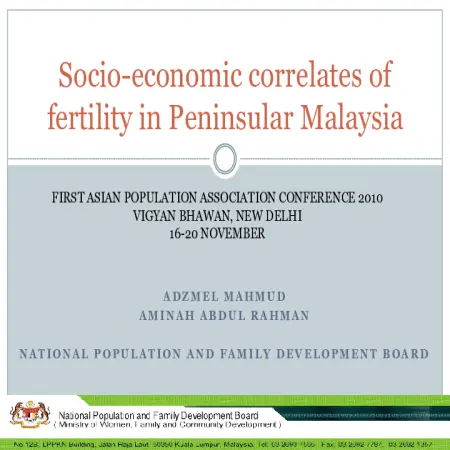Browse by Author
Results for Family Name : "Mahmud" AND Given Name/Initial : "Adzmel"
|
|
Subjective well-being of the Malaysian citizen: preliminary development of survey instrument
Item Type: Article
Editor:
Year: 00/03/2020
Abstract: A questionnaire is a well-known measurement instrument used by most of the researchers when conducting a survey. It is a powerful tool for collecting data in survey research. It should be noted that the quality of a measurement instrument used plays a key role in ensuring the quality of data gained in the survey. Therefore, it has become essential for the researchers to carefully design their questionnaire so that the quality of the data obtained can be preserved. Then, it is also vital for the researchers to assess the quality of the data obtained before it can be successfully used for further analysis. This article discussed an early process involved in development of the survey instrument for the purpose of assessing subjective well-being of the Malaysian citizen. These include operationalization of definition, identification of the important dimension and indicators of subjective well-being, rating scale and content validity of the items with the experts.
|
|
|
|
|
|
Socio-economic determinants of pap smear screening among married women in Peninsular Malaysia
Item Type: Article
Editor:
Year: 00/02/2013
Abstract: This study is to identify the influences of socio-economic factors towards the practice of Pap smear screening among ever married women. Bivariate correlations and logistic regression analysis was applied to the data set containing 3,283 ever married women age 15-49 years, interviewed during the Fourth Malaysian Population and Family Survey, 2004. It was found that only half the women had undergone Pap smear screening prior three years of survey, in which Chinese had the highest percentage of Pap smear screening. The logistic statistical analysis also had identified several variables has important determinant has of Pap smear screening for ever married women. Finding from this study suggest a significant relationship between the cervical cancer awareness and knowledge, age and ethnicity for those women who practice Pap smear screening.
|
|
|
|
|
|
Socio-economic correlates of fertility in Peninsular Malaysia
Item Type: Conference or Workshop Item
Editor:
Year: 00/00/2010
Abstract: To examine fertility trends and differentials among women in Peninsular Malaysia by selected socioeconomic variables which significantly influence the number of children ever born. A total of 3,697 ever-married women aged 15-49 were successfully interviewed in Peninsular Malaysia.
|
|
|
|
|
|
Socio-economic correlates of fertility in Peninsular Malaysia
Item Type: Thesis
Editor:
Year: 01/04/2009
Abstract: The main aim of this paper is to examine the fertility trends and differentials among Peninsular Malaysia women based on the 2004 Malaysian Population and Family Survey (MPFS-4) according to selected socio-economic variables which were found to have significant effect on number of children ever born. Findings from the study reveal that mean number of children ever born has dropped from 4.2 children in 1974 to 3.6 children in 1984, 3.4 children in 1994 and continued to decline to 3.1 in 2004. Fertility level is highest among Malays, who resides in rural areas, eastern region, lower educational level, women who had never worked, women whose husbands worked in agricultural sector and family income less than RM1000 a month. Socio-economic variables can only affect the fertility level through the intermediate variables such as postponement of marriage and use of contraception. There is an upward trend in age at first marriage from 17.6 years in 1974 to 22.0 years in 2004. Marriage postponement is more pronounced among highly educated Chinese women, followed by the Indians and the Malays. The contraceptive prevalence rate was highest among Chinese, followed by the Indians and the Malays. Ethnic differentials in number of children ever born are rather pronounced. In the multivariate context, after adjusting for age and age at first marriage, the differential in the mean number of children ever born among ethnic groups remain discernible. The socio¬economic variables have different effects on the fertility level of each ethnic group. 'Region' emerges as the most important predictor of Malay fertility, while 'work pattern' and 'family income' is the most important predictor of Chinese and Indian fertility respectively. Based on the present trend, it is highly likely that the fertility will reach replacement level by 2020, and the 70 million population target is unlikely to be achieved through natural increase. There is a need for the government to give some attention to the trend in delayed and non-marriage as this will determine to a large extent the future course of population growth in Malaysia.
|
|
|
|








